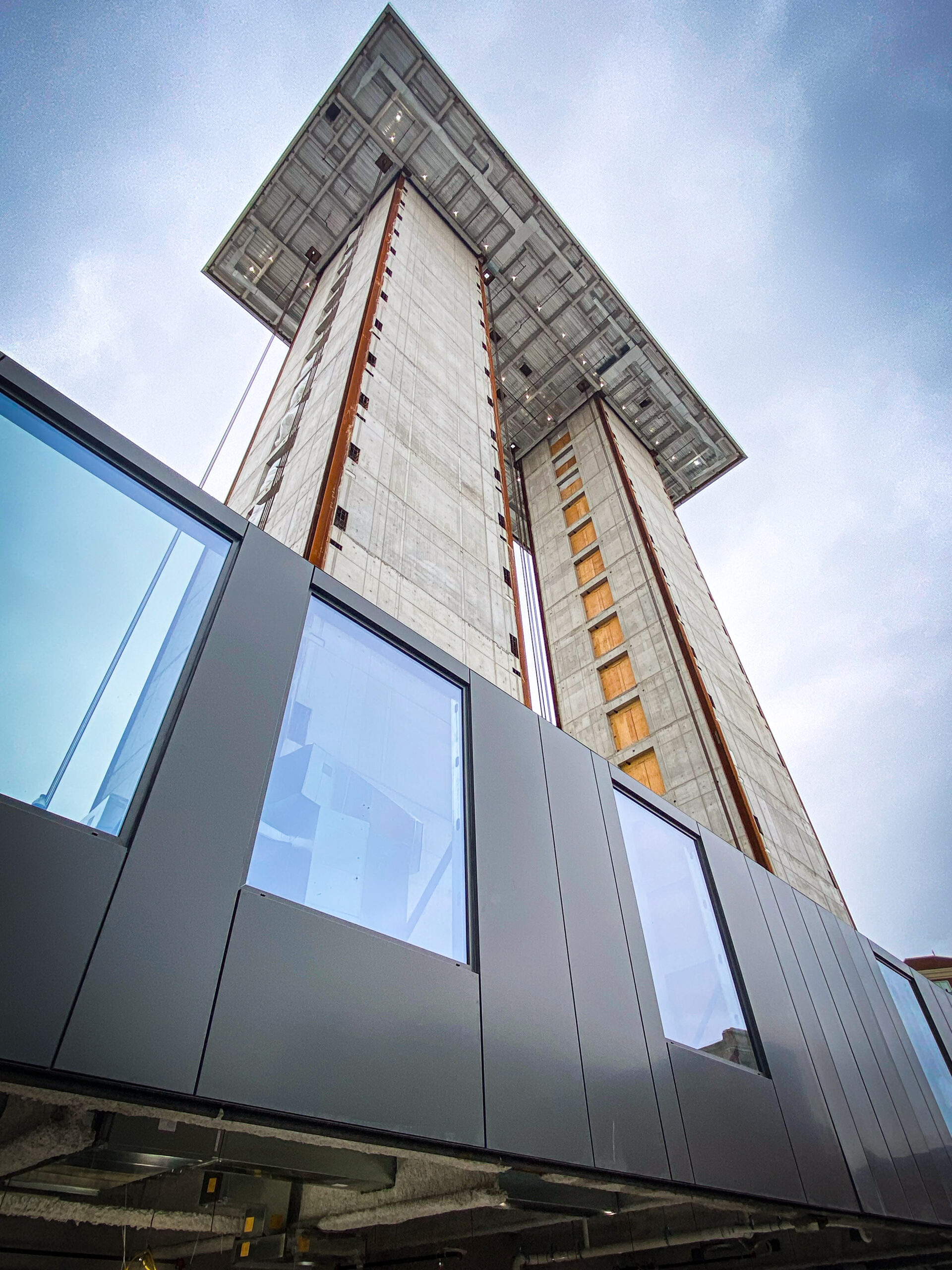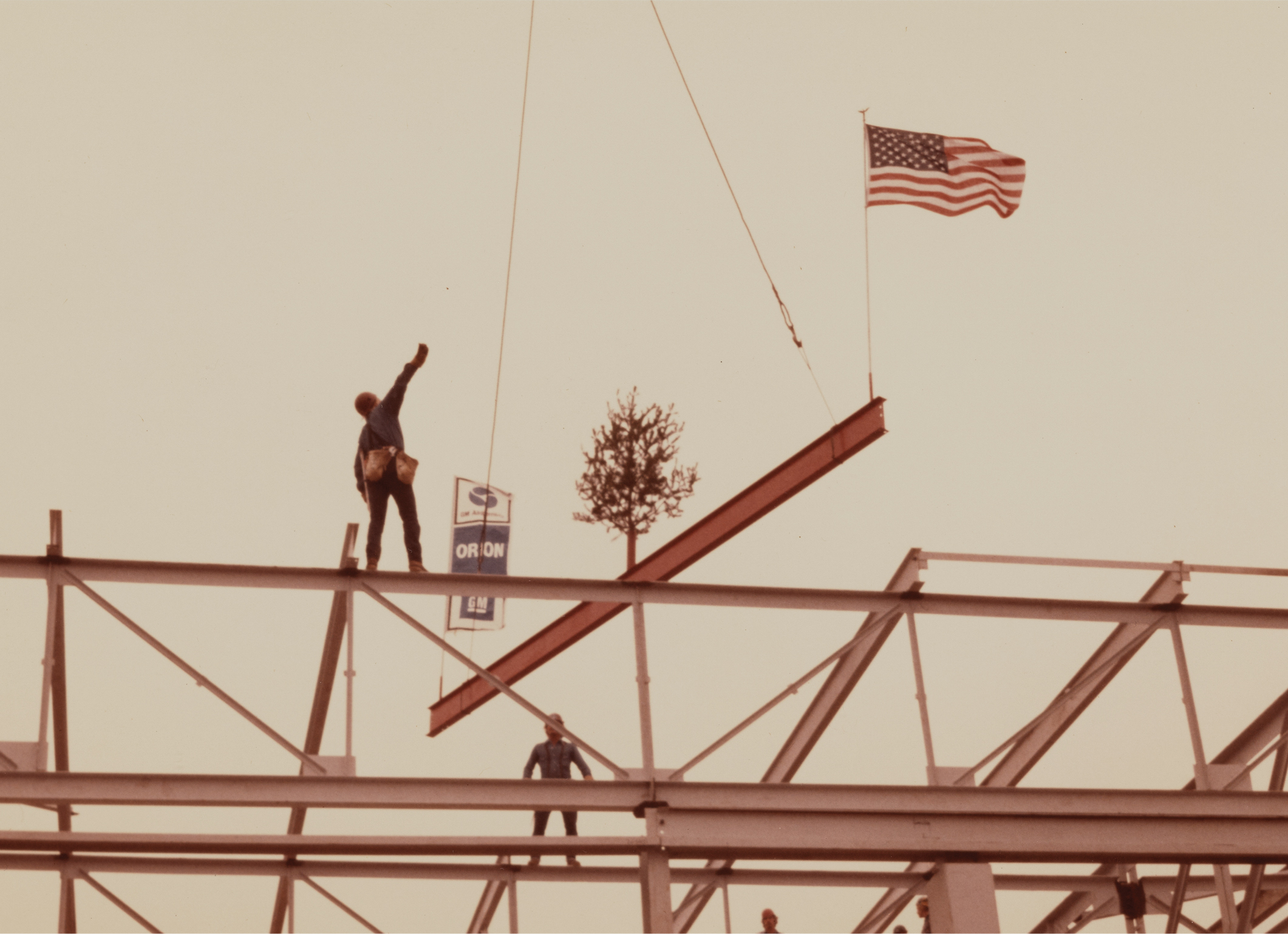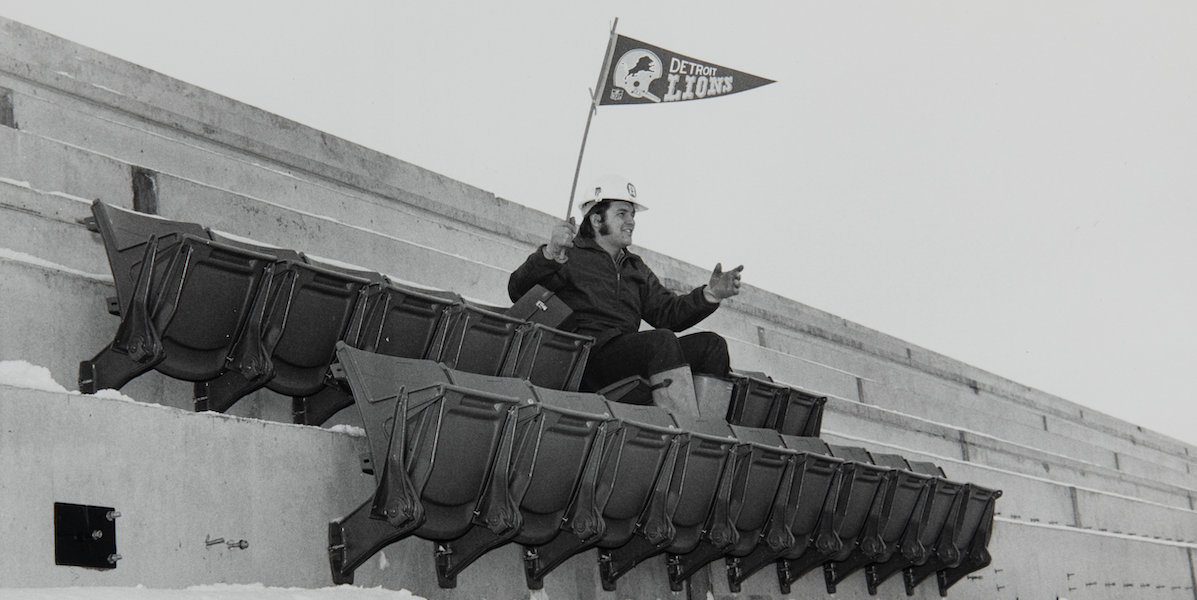LIFTbuild: Transforming Construction Possibilities
Projects
Detroit’s now-completed Exchange building — with its 16 stories of apartments, condos, high-end amenities, and commercial space — represents history in the making as the first LIFTbuild project in the world, utilizing an approach that is one of Barton Malow’s most groundbreaking and promising innovations.
Early on, however, it certainly raised some eyebrows. And questions.

Building Interest in LIFTbuild
The scene was quite a vision in Detroit’s vibrant Greektown neighborhood. Two tall, thin spire-like structures pushing skyward on the construction site.
“Curiosity has always been there,” explained LIFTbuild’s Chief Operating Officer Joe Benvenuto. “We even had people say … ‘that’s kind of a weird building. Are those … two apartment buildings there?’”
The questions presented an opportunity for Joe and his LIFTbuild team members to explain to curious bystanders that those two concrete structures, also known as “spines,” were structural elements that “hold the building up once the rest of the floor plates are in place.”
From there, the process behind LIFTbuild gets even more compelling.

The Exchange project in progress was a unique sight to behold
Vertical Manufacturing™
An entity within the Barton Malow Family of Companies, LIFTbuild uses a manufacturing approach where each floor is first built at grade with the installation of steel, concrete, and select building systems like MEP/FP and façade. Once assembled at ground level, the floor is raised at an average rate of 20-30 feet per hour to its final height, where it’s locked into place. This allows the LIFTbuild process to be more like a manufacturing environment than a traditional construction site. The research and development behind this technology alone has yielded 15 U.S. patents, and a handful more are pending.

The Steel team at the Exchange project, recreating the famous “Lunch atop a Skyscraper”
For Joe, the benefits are clear: enhanced safety for workers, efficiencies, and significant savings in time and costs.
“We’re not putting people on beams 100 feet in the air that need to be tied off. We’re trying to eliminate all the fall hazards. That is our number one objective,” he says.
Additionally, the LIFTbuild technique is up to 30 percent faster and 20 percent less expensive than the conventional build process, in part because of the reduced manpower necessary to complete the building.
Lifting the Future of Construction
Thinking back on the emotions the team felt the night of the first lift on Exchange in April 2022, Joe remembered, “As the lift goes up … we’re all kind of waiting for something to happen. … But realistically, it’s a very controlled event. At 20 to 30 feet an hour, it can very quickly get boring, which is a good thing. We really don’t want excitement,” he said, noting that a typical floor plate “weighs about a million pounds.”
But the real excitement is what LIFTbuild means to Barton Malow and the future of the design and construction industry.
“We’ve seen attempts to revolutionize the construction industry for 50-plus years,” Joe says. “The unique advantage we have is we affect every stakeholder in the project, right down to the person spraying the fireproofing. They’re doing that at grade in a way where they’re not standing on a ladder; they’re not pulling hoses and equipment out through the building. My team hears me say this all the time … but if we can provide improvement to all phases of the project… from conceptualizing a design all the way through turnover, then I think we truly stand a chance of transforming the industry.”
For Barton Malow and its clients, the added safety, efficiencies, and value of the LIFTbuild approach can take the construction industry to entirely new heights.
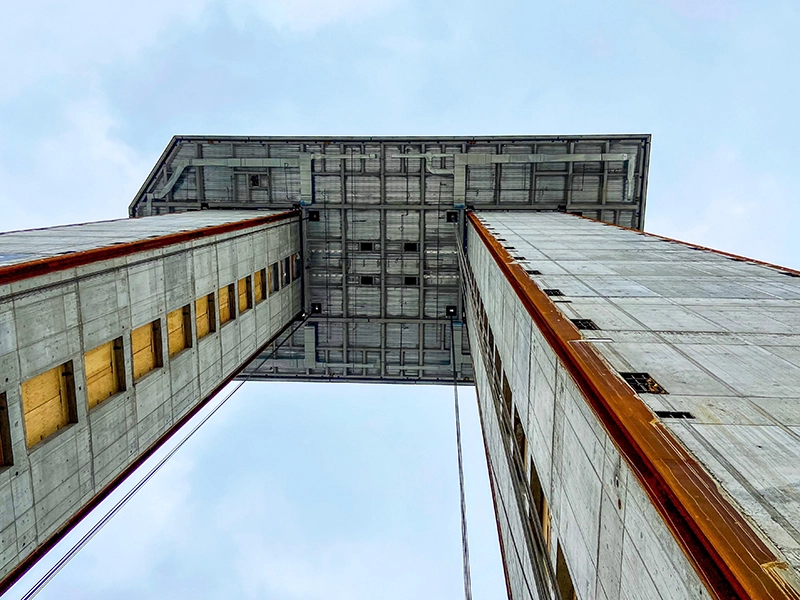
LIFTbuild floor plate from underneath supported by the two spines
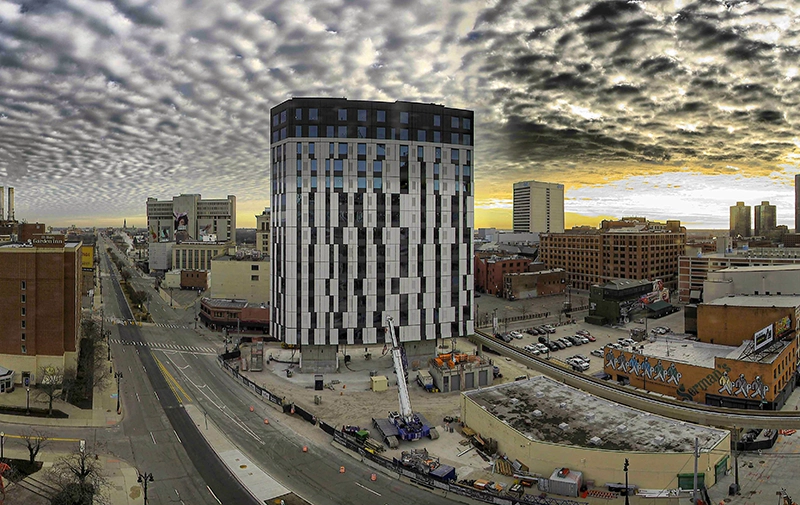
Lifting the third floor at the Exchange
Listen to Said Differently: Transforming How the World is Built
Exchange Detroit is a notable project in and of itself, being the first residential development in its area of downtown Detroit in about 60 years.
But perhaps even more notable is how it’s being built – from the top down using Barton Malow’s LIFTbuild proprietary manufacturing approach. It represents the first time this approach has been deployed.
Listen to Episode 6 of Barton Malow's Said Differently podcast, ‘Transforming How the World is Built,’ now.
